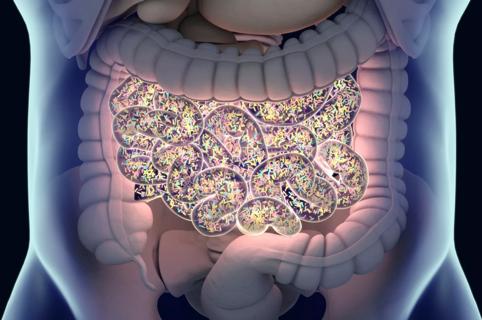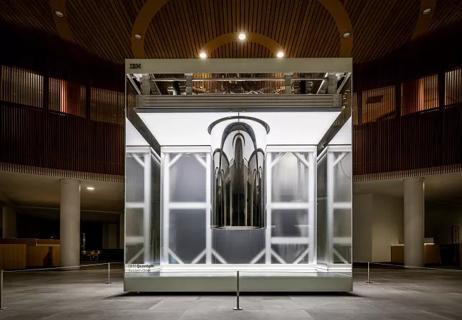Cleveland Clinic-led research employs advanced image analysis to inform dose delivery

Cleveland Clinic researchers have trained an advanced “deep-learning” computer network to detect subtle radiation sensitivity features in the computed tomography (CT) scans of individual lung cancer patients that can predict the likelihood of successful radiotherapy outcomes.
Advertisement
Cleveland Clinic is a non-profit academic medical center. Advertising on our site helps support our mission. We do not endorse non-Cleveland Clinic products or services. Policy
Using this unique “image fingerprint” and a patient’s electronic medical record, the artificial intelligence (AI) agent, called Deep Profiler, can generate a personalized radiation dose plan capable of reducing the probability of treatment failure to less than 5%, the researchers report.
The new AI approach marks the first time that machine-driven quantitative image analysis has been used to personalize radiation dose delivery. It represents a major improvement over conventional radiotherapy, which is delivered uniformly, without taking into account an individual patient’s tumor characteristics and other factors.
“While highly effective in many clinical settings, radiotherapy can greatly benefit from dose optimization capabilities,” says lead author Mohamed Abazeed, MD, PhD, a Cleveland Clinic Cancer Center radiation oncologist and a researcher at the Lerner Research Institute. “This framework will help physicians develop data-driven, personalized dosage schedules that can maximize the likelihood of treatment success and mitigate radiation side effects for patients.”
CT images are an important tool for tumor delineation and treatment planning. Beyond the information about tumor location, size and geometry, the scans record considerable additional amounts of data in the form of voxel intensity, which is related to tissue density. The human eye can only discern a fraction of those minute density variations, however, which limits the images’ utility for individualized, optimized radiotherapy.
Advertisement
Dr. Abazeed and his colleagues decided to address this issue with a machine learning approach called deep learning, in which an artificial neural network is fed raw data and uses data-characterization algorithms to discover progressively higher-level classification features.
In this case, the Deep Profiler neural network identified and extracted radiation sensitivity parameters predictive of treatment failure from individual pre-therapy lung CT images. The large size of the clinically annotated image data set the researchers used to train and validate Deep Profiler — representing 849 Cleveland Clinic patients with stages IA-IVB primary or recurrent lung cancer, as well as patients with other cancer types that had metastasized to the lung — bolstered the neural network’s classification accuracy and limited false findings.
After analyzing a patient’s CT scan, Deep Profiler produced an image signature of radiation sensitivity whose characteristics predicted the likely outcome of standard high-dose stereotactic body radiotherapy.
Combining that signature with information from the patient’s medical record, including biologically effective dose (BED) and the tumor’s main histological subtype (adenocarcinoma or squamous cell carcinoma), yielded an optimized, patient-specific radiation dose called iGray whose estimated probability of local failure was less than 5% at 24 months post-treatment. Local failure was defined as radiographic progression with or without positive biopsy within 1 cm of the planning target volume.
Advertisement
To test the accuracy of Deep Profiler’s predictions, Dr. Abazeed and his colleagues compared them to patients’ clinical outcomes. They found that patients whom Deep Profiler scored as high-risk for treatment failure actually failed at a significantly higher rate (20.3% at 3 years) than that of failures among patients with low-risk Deep Profiler scores (5.7% at 3 years). On multivariate analysis, a high-risk Deep Profiler score, a low radiation dose and the histological subtype of the patient’s tumor were all significantly associated with local failure.
The results confirmed the AI approach’s validity and its superiority to classical radiomics or clinical variables alone.
The wide iGray dose ranges that Deep Profiler determined were capable of achieving a less than 5% failure probability in individual patients’ treatment — from 21.1 to 277 gray, BED — indicated that dose reductions were feasible in 23.3% of cases in the study cohort. The results also showed that the recommended iGray dose could be safely delivered in a majority of the cases.
“The development and validation of this image-based, deep-learning framework is exciting because not only is it the first to use medical images to inform radiation dose prescriptions, but it also has the potential to directly impact patient care,” says Dr. Abazeed. “The framework can ultimately be used to deliver radiation therapy tailored to individual patients in everyday clinical practices.”
The researchers gained several insights from their work:
Advertisement
Prospective validation of the AI framework via a clinical trial is being planned, Dr. Abazeed says. If successful, governmental approval and mass implementation will follow.
“Machine learning tools, including deep learning, are poised to play an important role in healthcare,” Dr. Abazeed says in conclusion. “This image-based information platform can provide the ability to individualize multiple cancer therapies, but more immediately is a leap forward in radiation precision medicine.”
Advertisement
Advertisement

First full characterization of kidney microbiome unlocks potential to prevent kidney stones

Researchers identify potential path to retaining chemo sensitivity

Large-scale joint study links elevated TMAO blood levels and chronic kidney disease risk over time

Investigators are developing a deep learning model to predict health outcomes in ICUs.

Preclinical work promises large-scale data with minimal bias to inform development of clinical tests

Cleveland Clinic researchers pursue answers on basic science and clinical fronts

Study suggests sex-specific pathways show potential for sex-specific therapeutic approaches

Cleveland Clinic launches Quantum Innovation Catalyzer Program to help start-up companies access advanced research technology